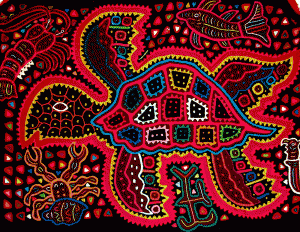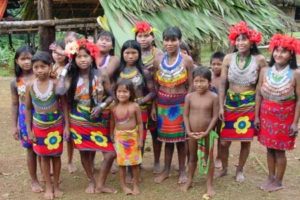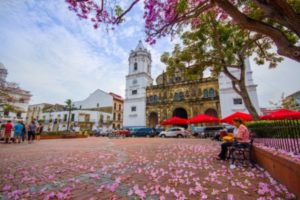 Panama Canal: The Panama Canal is approximately 80 kilometers (51 miles) long and links the Atlantic and Pacific Oceans. This waterway was cut through one of narrowest saddles of the isthmus that joins North and South America and uses a system of locks and compartments with entrance and exit gates. The locks function as water lifts: they raise ships from sea level (the Pacific or the Atlantic) to the level of Gatun Lake (26 meters above sea level); allowing them to sail the channel through the Continental Divide.
Panama Canal: The Panama Canal is approximately 80 kilometers (51 miles) long and links the Atlantic and Pacific Oceans. This waterway was cut through one of narrowest saddles of the isthmus that joins North and South America and uses a system of locks and compartments with entrance and exit gates. The locks function as water lifts: they raise ships from sea level (the Pacific or the Atlantic) to the level of Gatun Lake (26 meters above sea level); allowing them to sail the channel through the Continental Divide.
Native cultures: Indigenous groups make up 5.3% of the total population of the Republic of Panama. The most important Indian tribes on the isthmus are the Kunas, who are found on the islands of San Blas and in the jungles of Chucunaque and Bayano, the Ngobe Buglé (also known as Guaymíe) who live mainly in the mountainous areas of Bocas del Toro, Veraguas, and Chiriquí, the Emberá and Wounan (both tribes of the Chocoes group) who live in the Darién jungle and the Teribe and Cricamola in the province of Bocas del Toro.


Crafts: Panama is a country of great natural beauty and fascinating indigenous cultures.
 Indigenous artisans make and sell beautiful handicrafts including woven baskets, tagua nut carvings, molas and other tribal crafts that are a tangible link to Panama’s diverse past and multi-ethnic present. Lately, the sale of native crafts to tourists has increased and helps to support the needs of indigenous villages and native people.
Indigenous artisans make and sell beautiful handicrafts including woven baskets, tagua nut carvings, molas and other tribal crafts that are a tangible link to Panama’s diverse past and multi-ethnic present. Lately, the sale of native crafts to tourists has increased and helps to support the needs of indigenous villages and native people.
 Carnival: Carnival in Panama is a celebration that takes place in just about every town of the country. Although the celebration is annual, an often asked question even by locals is “When is the carnival this year?” As the celebration always takes place 40 days before the Christian holy week the dates change every year.
Carnival: Carnival in Panama is a celebration that takes place in just about every town of the country. Although the celebration is annual, an often asked question even by locals is “When is the carnival this year?” As the celebration always takes place 40 days before the Christian holy week the dates change every year.
The most famous celebration in the country takes place in the town of Las Tablas in the province of Los Santos in the Azuero Peninsula. Panama City and Penonome are also excellent places to celebrate this huge party, the most famous of all celebrations in Panama. Like Carnival of Rio de Janeiro and Mardi Gras in New Orleans, the carnival in Panama is celebrated on the same dates and by the whole country.
 Museums: Panama's rich 10,000 year history is represented by archeological relics and monuments of the cultures of four different continents. Handicrafts, natural history and the incredible cultural mix of the country are all explored in the museums and galleries of Panama City. All of the city's museums are open to the general public and provide visitors, particularly in the historic area of Casco Viejo, an incredible perspective on the country’s historical, cultural and ecological highlights.
Museums: Panama's rich 10,000 year history is represented by archeological relics and monuments of the cultures of four different continents. Handicrafts, natural history and the incredible cultural mix of the country are all explored in the museums and galleries of Panama City. All of the city's museums are open to the general public and provide visitors, particularly in the historic area of Casco Viejo, an incredible perspective on the country’s historical, cultural and ecological highlights.









